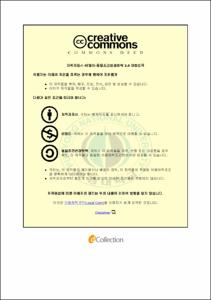Copepods의 산란력과 영양
- Alternative Title
- Fecundity and nutrition of copepods
- Abstract
- Rotifer와 Artemia를 대체하기 위한 copepods 종을 개발하기 위해 copepods의 사육을 위하여 다양한 copepods 종의 크기, 산란력, 영양성분을 조사하였다.
4 strains의 Isochrysis 중 광온성이며 지방산 함량이 높은 Isochrysis galbana (KMMCC-12)를 선별하여 copepods의 먹이로 공급하였다. 총 16 strains의 copepods의 nauplius와 성체의 갑장과 갑폭, 포란한 암컷의 생존기간, 산란일수, 총 산란력 및 일일 산란력을 조사하였다. 총 nauplius 산란수를 고려하여 9종 (Pseudodiaptomus inopinus, Tachidius triangularis, Tigriopus japonicus, Amphiascus sp. Nitokra spinipes, Tisbe teuera, Paracyclopina nana, Apocyclops royi, Apocyclops sp.)을 선정하여 아미노산과 지방산을 분석하였고 대조군으로 사용된 rotifer와 Artemia nauplius의 영양성분과 비교하였다.
Copepods는 nauplius와 성체의 갑장이 각 각 45.9∼97.3 μm와 431.8∼707.3 μm인 small size group (T. triangularis, Amphiascus kawamurai, Amphiascus sp., N. spinipes, T. teuera, P. nana)과 nauplius와 성체 갑장이 각각 119.6∼187.6 μm와 832∼1157.8 μm인 large size group (P. inopinus, T. japonicus, A. royi, Apocyclops sp.)로 구분되었다. 이 중 P. inopinus의 nauplius 크기가 187 μm로 가장 크게 나타났으며, N. spinipes의 nauplius 크기는 45 μm로 가장 작게 나타났다.
포란한 암컷의 생존기간과 산란일수는 Harpacticoid 목의 copepods가 약 10∼20일로 가장 길었으며, 다음으로 Cyclopoid 목, Calanoid 목의 순이었다.
암컷 한 개체당 일일 산란력은 Harpacticoid 목인 T. japonicus와 N. spinipes가 약 8개체로 가장 높았다. 총 nauplius 생산량은 T. japonicus와 N. spinipes가 약 100∼150 개체로 가장 높았으며, 그 다음으로 Cyclopoid 목인 P. nana와 A. royi가 약 30∼50 개체로 나타났으며, Calanoid 목인 P. inopinus가 10개체로 가장 낮았다.
9종의 copepods의 아미노산과 지방산 조성에 있어서 단백질과 필수 아미노산 함량은 P. nana 에서 각각 51.3%와 21.2%로 가장 높았고, 대조군으로 사용된 Artemia nauplius에서 각각 31.5%와 14%로 가장 낮았다. 총 지질 함량은 P. inopinus, P. nana 그리고 Artemia nauplius에서 79∼96 μg/mg으로 가장 높았다. 다가불포화지방산 함량은 P. inopinus, P. nana 그리고 Artemia nauplius에서 13∼15 μg/mg으로 가장 높았다. EPA 함량은 P. inopinus, T. japonicus 그리고 P. nana,에서 1.7∼1.8 μg/mg로 가장 높았으며, T. triangularis에서 0.6 μg/mg으로 가장 낮았다. DHA 함량은 9종의 copepods 모두 대조군인 rotifer와 Artemia nauplius보다 유의하게 높게 나타났다(P<0.05), 그 중 P. inopinus와 P. nana에서 3.8∼4.3 μg/mg으로 가장 높게 나타났으며, Artemia nauplius에서는 DHA가 검출되지 않았다.
포란 암컷의 산란력은 small size group copepods 중에서는 N. spinipes가 가장 높았으며, large size group copepods 중에서는 T. japonicus가 가장 높게 나타났다. 필수아미노산과 고도불포화지방산함량은 small size group과 large size group에서 각 각 P. nana와 P. inopinus가 가장 높게 나타나 N. spinipes와 P. nana는 S-type rotifer를 대체하기에 적합하다고 판단되며, T. japonicus와 P. inopinus는 rotifer와 Artemia nauplius를 대체하기에 적합한 copepods 종으로 판단된다.
In the natural food web, copepod constitutes a major part of the diet for marine fish larvae. Recently, many studies on copepods as live food for seedling production of marine fish larvae have been performed, because copepods have many advantages in terms of various size and high nutritional value compared to rotifer and Artemia nauplius.
This study was carried out not only to investigate suitable copepod species, but also to find optimum Isochrysis strain for copepod feeding.
The growth rate and fatty acids content of Isochrysis cultured at three different temperature (25, 29, 33 ℃) were analyzed. Microalgae were grown with f/2 medium in batch culture at 23 psu and continues light with 80 μmol photons m-2 s-1. Microalgae were harvested in stationary phase and analysed for fatty acid composition. Among the Isochrysis strains, Isochrysis galbana (KMMCC-12) was the best strain due to high growth rate and n-3 HUFA content.
In order to find suitable copepod as live food, size of nauplius, nauplius production, amino acid and fatty acid content of 16 strains of copepods fed Isochrysis galbana (KMMCC-12) were examined.
Sixteen copepods strains were divided into two size group: small (nauplius length 45.9∼97.3 μm) group and large (nauplius length 119.6∼187.6 μm) group. Harpacticoid copepod, Tigriopus japonicus and Nitokra spinipes showed the highest fecundity with 151.1 and 139.6 nauplius production from a gravid female. With regard to nutrient, the protein and essential amino acids were the highest in Cyclopoid copepod, Paracyclopina nana and n-3 HUFA was the highest in P. nana and Calanoid copepod, Pseudodiaptomus inopinus.
- Issued Date
- 2012
- Awarded Date
- 2012. 2
- Type
- Dissertation
- Keyword
- Copepods
- Publisher
- 부경대학교 대학원
- Alternative Author(s)
- Yang, Sung Jin
- Affiliation
- 부경대학교 수산생물학과
- Department
- 대학원 수산생물학과
- Advisor
- 허성범
- Table Of Contents
- I. 서론 ·····································································1
Ⅱ. 재료 및 방법···························································3
1. 미세조류의 선정·······················································3
1. 1 원종 배양··························································3
1. 2 온도별 성장률 측정················································5
1. 3 지방산 분석························································5
2. Copepods의 채집 및 배양············································6
3. 먹이생물로 적합한 copepods 선택····································8
3. 1 Nauplius와 성체의 크기 측정·····································8
3. 2 암컷의 산란력 및 생존일수········································8
3. 3 아미노산과 지방산 분석············································9
4. 통계처리······························································10
Ⅲ. 결 과··································································11
1. 미세조류의 선정······················································11
1. 1 온도별 성장률 ····················································11
1. 2 온도별 지방산 조성···············································14
2. 먹이생물로 적합한 copepods 선택···································17
2. 1 종별 nauplius와 성체의 크기·····································17
2. 2 포란한 암컷의 생존기간 및 산란일수····························20
2. 3 암컷의 산란력·····················································23
2. 4 아미노산과 지방산 조성··········································26
Ⅳ. 고 찰··································································35
Ⅴ. 요 약··································································44
Ⅵ. 감사의 글·····························································46
Ⅶ. 참고문헌······························································47
- Degree
- Master
- Files in This Item:
-
-
Download
 Copepods의 산란력과 영양.pdf
기타 데이터 / 944.99 kB / Adobe PDF
Copepods의 산란력과 영양.pdf
기타 데이터 / 944.99 kB / Adobe PDF
-
Items in Repository are protected by copyright, with all rights reserved, unless otherwise indicated.